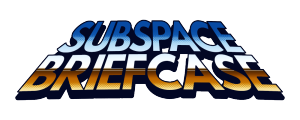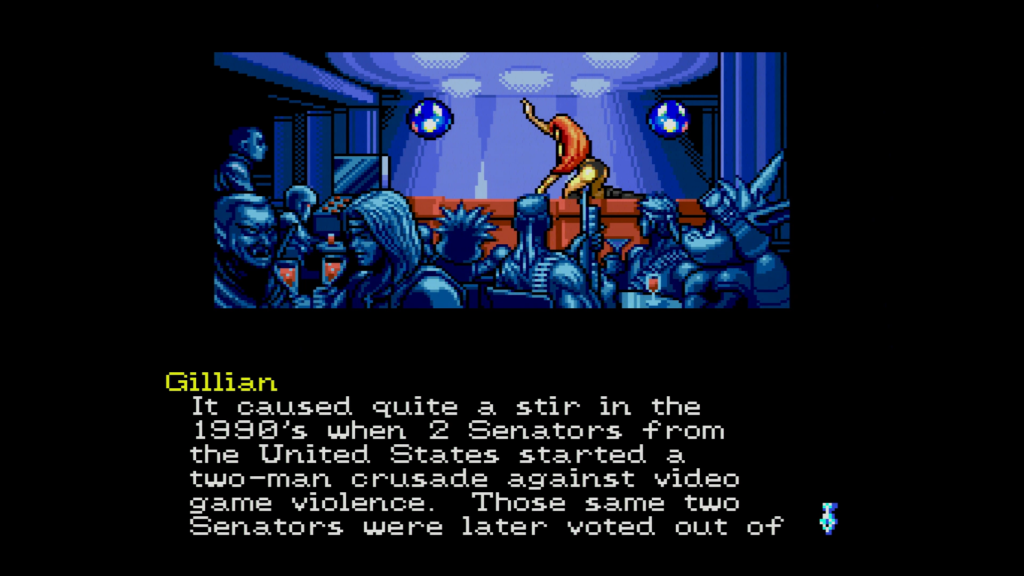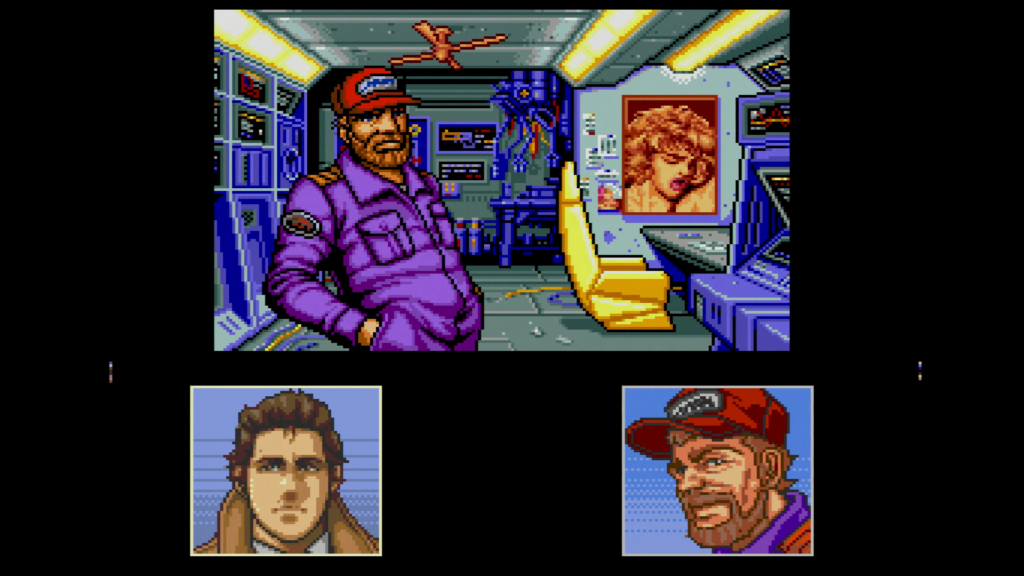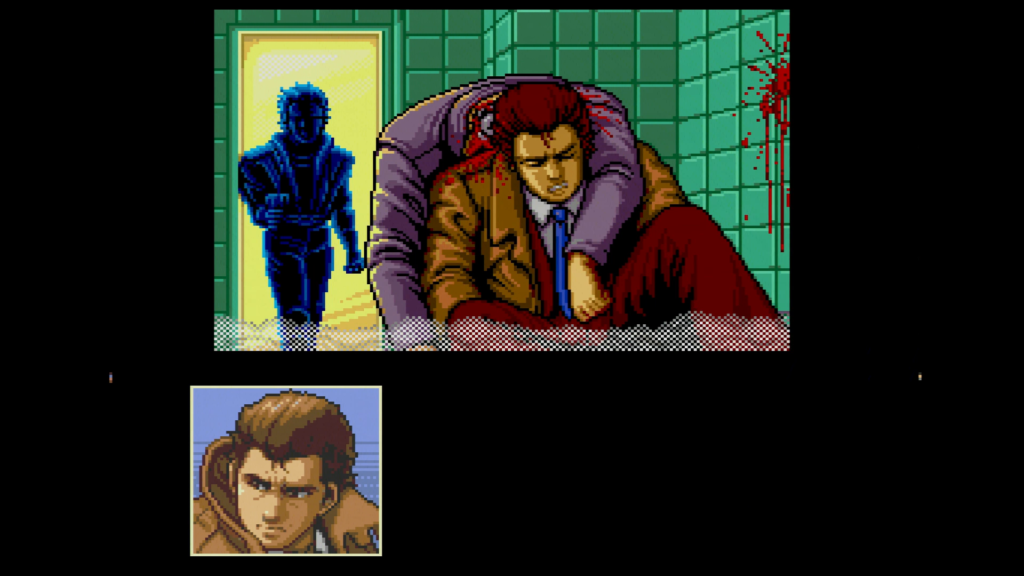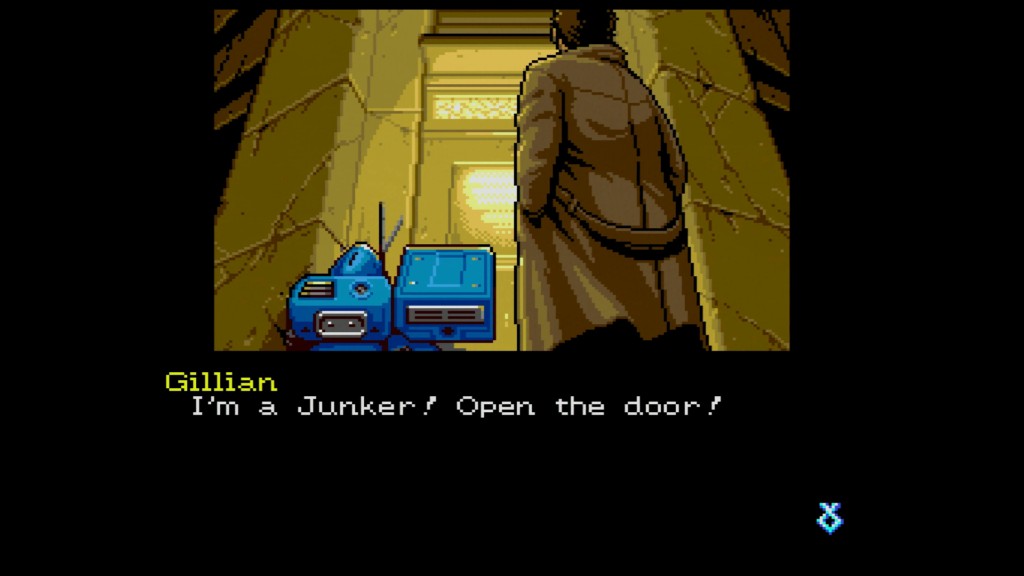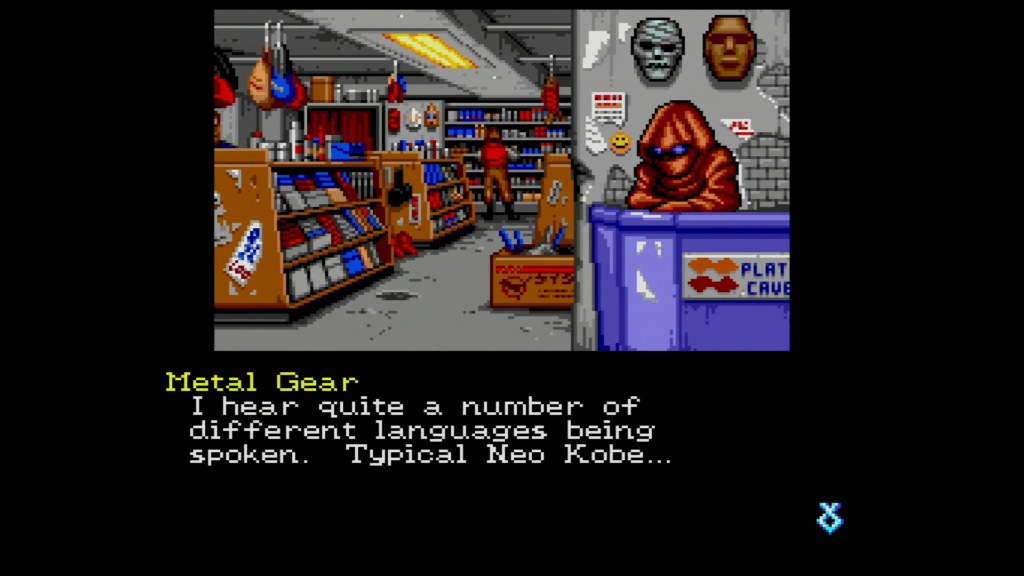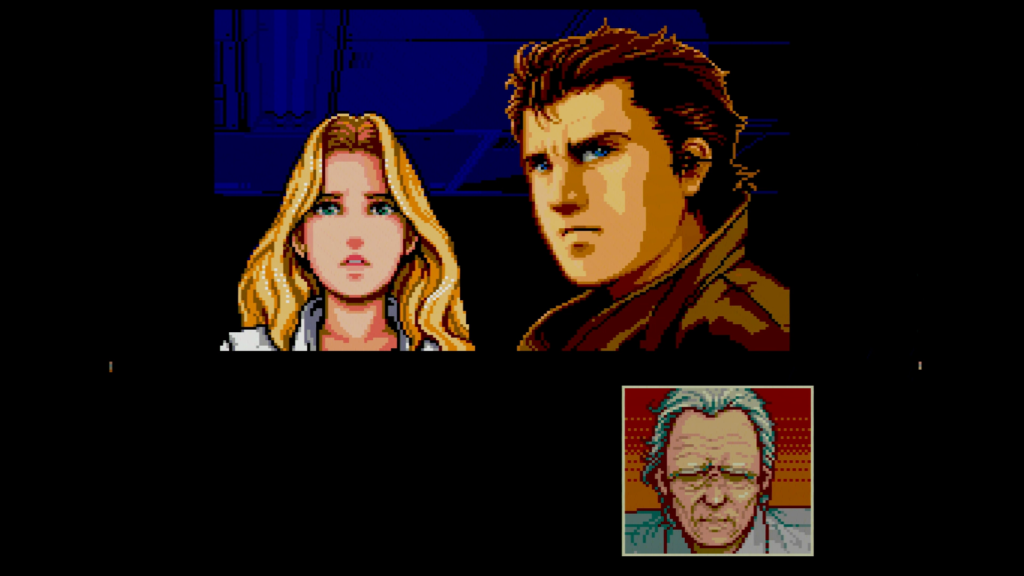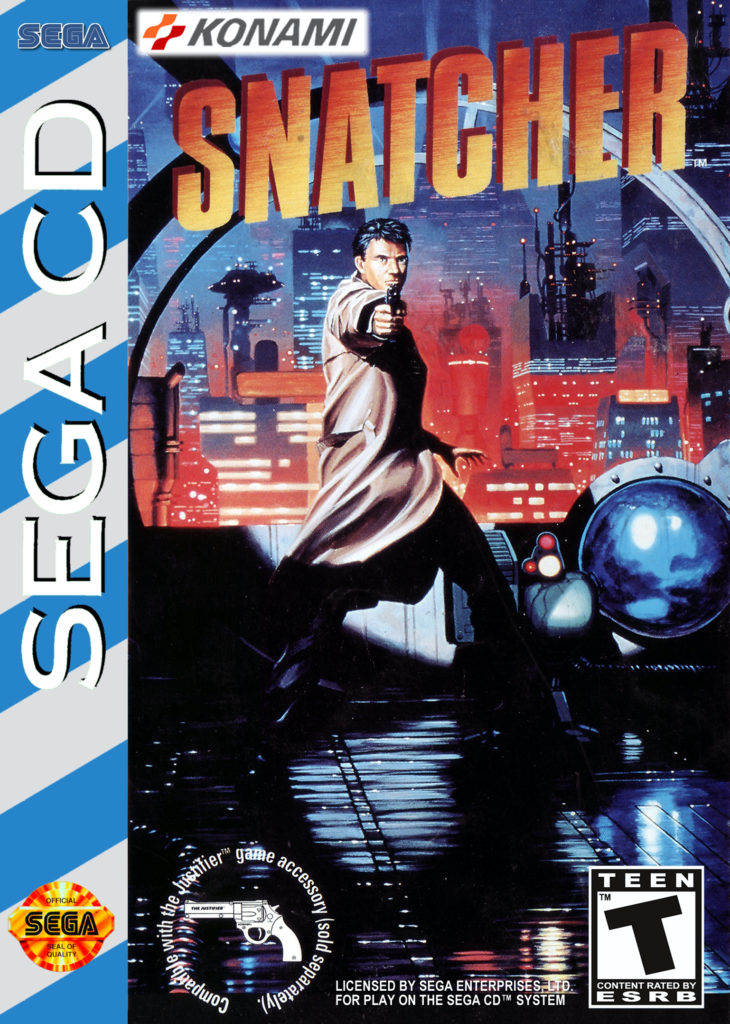
Snatcher
Sega CD, 1995
Developer: Konami
Publisher: Konami
THE IMAGES IN THIS POST CONTAIN SPOILERS.
Snatcher, which was designed by famed gaming auteur Hideo Kojima, failed to make much of a splash when it was released to western audiences in the mid ’90s. While Snatcher received a respectable response from critics, it went largely unnoticed (and un-purchased) by the game playing public. Upon the the release of Kojima’s Metal Gear Solid in 1998, however, the game’s stock rose immensely – and it really hasn’t stopped rising. As of this writing, the Snatcher still commands a handsome price on the secondary market:

I was fortunate enough to get a deal on Snatcher about 10 years back when it was far less expensive (but by no means cheap, mind you). I wouldn’t recommend that anybody drop a grand on Snatcher – be a responsible human and emulate it. That being said, it’s only when you play it on original hardware do you really get a full appreciation for what a fantastic piece of art and game design it is – it’s a beautiful showcase for the early CD ROM technology for which it was produced.
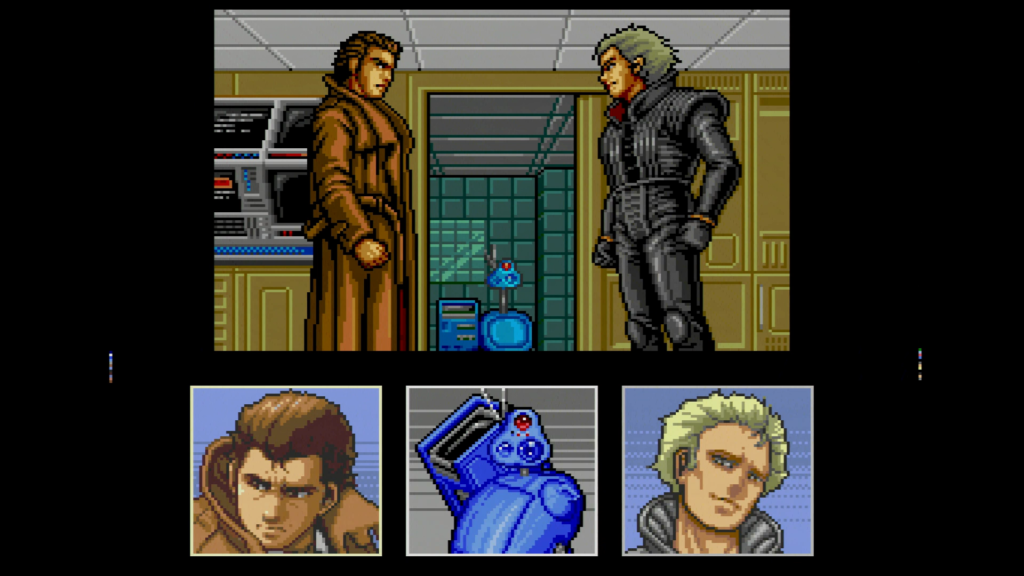
Something that tends to be downplayed in discussions of Snatcher is that it is optimized for play with a light gun, of all things. Snatcher plays out as a fairly basic (and, to be frank, often clumsy) graphic adventure/visual novel – until you encounter some bad guys. At that point, Snatcher becomes a shooting gallery, and if you’re lucky enough to have the right equipment, you can unholster your plastic and blast away.

Unfortunately, even if you’ve got a CRT, playing Snatcher with a light gun isn’t that easy. Snatcher is one of the few games to use Konami’s “Justifier” – the plastic blue revolver that was bundled with Lethal Enforcers. Sadly, no other light gun – not even Sega’s official “Menacer” – will work. For what it’s worth, this time around I worked my way through Snatcher with a fight stick – I found that to be much easier than using a standard Genesis controller.
An interesting historical aside: notably, due to being associated with Lethal Enforcers, the Justifier garnered a bit of infamy when Senator Joe Lieberman brandished it on live television while arguing for the regulation of violent video games.

Lieberman’s position undoubtedly made an impression on Snatcher’s chief localizer, Jeremy Blaustein, who snuck in a few jabs:
Like much of Snatcher, I can only imagine how confusing this will be to future generations. For all of its innovation and audiovisual excellence, the Sega CD version of Snatcher is, at its core, a port of a Japanese PC game from 1988. Its plot, which was presumptively authored some time before the Berlin Wall fell, has an anti-soviet bent to it that probably seemed a little bit strange/dated when it first reached American audiences in 1995.
Additionally, to say Snatcher wears its Hollywood inspirations on its sleeve would be an understatement. While this seemed bold, interesting and cool back in the ’90s, contemporary audiences might view it as derivative or lazy:
Regardless, as noted in my one image review, I think Snatcher holds up – its graphics and sound carry it past its historical peculiarities and somewhat limited gameplay and well-into rarefied air. To play Snatcher is to love it – I suggest that you give it a shot any way you can.
I played Snatcher on a Sega CDX. Video was upscaled to 1080p using a Micomsoft Framemeister. I utilized Firebrandx’s profiles to get the best image quality I could.
